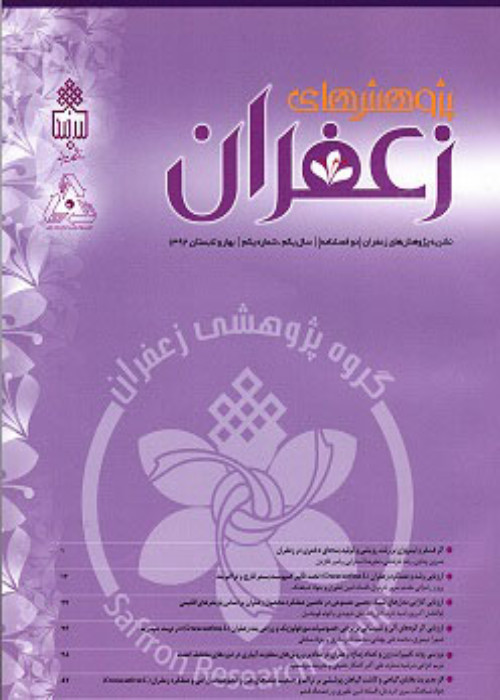Investigating the Factors Affecting Internal Branding of Saffron Products (a Case Study of Ghaenat and Saharkhiz Brands)
The brand is one of the intangible assets of any company, whose proper management can pave the way to achieve more significant market share and profitability in any industry (Usulian et al., 2002). Saffron, as the red gold of Iran, the most valuable agricultural product and the most expensive spice in the world, has always enjoyed a special place in the history of our country's exports. After dates, it is the country's most important non-oil export product. Then agricultural products account for a significant part of non-oil exports, in which saffron has been of particular importance, so that in different periods, it has been one of the country's major export products. Iran has more than 90% of the domestic production of saffron and has the first place in the production of this valuable product. It ranks first in the world in saffron production and alone produces 90% of the world's saffron. (Ministry of Agricultural Jihad, 2021).
In terms of the nature of the type of quantitative research, this research is non-experimental in terms of the degree of control of variables, in terms of the purpose of the applied research. The statistical population is about 750 people. sample size was determined by using the Karjesi-Morgan table of 256 people. Using the simple random sampling method, people were selected entirely randomly. The studied subjects were questioned and interviewed using a questionnaire. Options of components influencing internal branding were prepared with ordinal and interval scales, including 31 questions. In order to determine the reliability of the research tool, a pre-test was conducted using 30 questionnaires in the early stages of questioning, and Cronbach's alpha value was calculated using SPSS version 21 software. Then the reliability of different questionnaire parts was measured in the pre-test stage. The Cronbach alpha coefficient of the questionnaire was calculated in the practical components of brand awareness, brand loyalty, brand association, brand performance, brand image, and attitude, and perceived quality of the brand according to the range of 0.817 to 0.937.
At this stage, in order to determine the significance of the indicators of each of these structures, the accuracy of each of these indicators in introducing the desired structure, and the validity of the structures with the hidden variable of the internal branding components of saffron, second-order confirmatory factor analysis was used; Therefore, the measurement model of internal branding components of saffron with 31 markers and six constructs was implemented in the form of second-order factor analysis in Lisrel software, and the relationships of its markers were drawn. Table 5 is related to the number of factor loadings (impact values) for each factor, and Table 6 is related to their t-statistics. In order to analyze the fitted model, first of all, it is necessary to examine the appropriateness of the model fitting criteria. In this research, to evaluate the confirmatory factor analysis model of chi-square indices, the most important index of the square root of the variance of the approximation error (RMSEA), the standardized mean squared residuals (SRMR), the goodness-of-fit index (GFI), the smoothed goodness-of-fit index (NFI), Unsmoothed goodness of fit (NNFI) and comparative fit index (CFI) were used. According to Table 3 of the fit criteria of the cooperative components measurement model, the overall fit of the model is appropriate, and the assumed theoretical structure for the model is confirmed.
Today, brand management is an increasingly important field in marketing management, especially as organizations direct their efforts toward communicating subtle and complex messages (Goodchild and Callow, 2001). Therefore, this research was conducted by examining the various dimensions of internal brand-building effects of saffron, and the explanation of the influential components using the second-order factor analysis showed that the most influential factors include the perceived quality of the brand, brand association, brand performance, awareness of Brand, brand loyalty and brand image and attitude. Other researchers also confirm the obtained results.
- حق عضویت دریافتی صرف حمایت از نشریات عضو و نگهداری، تکمیل و توسعه مگیران میشود.
- پرداخت حق اشتراک و دانلود مقالات اجازه بازنشر آن در سایر رسانههای چاپی و دیجیتال را به کاربر نمیدهد.



